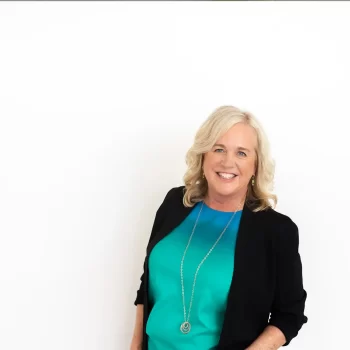How to Talk to Your Customers
Understanding your customers is the foundation of a successful business. It’s what makes them choose your offer over somebody else’s. It’s what makes them willingly and happily pay premium prices. It’s what ultimately inspires trust and loyalty.
If you created your business because you want to help people, the deep insights you uncover around unmet needs, challenges, frustrations and interests is ultimately what will guide you to the best way to use your talents.
I mention the value of customer conversations a lot in the blog, like I did recently here. But I haven’t talked a lot about exactly how to do it. So if you’ve been wondering, this is your post.
If you’re in a hurry, here’s the summary:
- Talk to your customers 1:1
- Ask your current customers or reach out to your network to find people that have a lot in common with your intended customers
- Create a discussion guide to keep the conversation on track
- Ask open ended questions
- Use active listening techniques
- Evolve your discussion guide
- Go back and review ALL your notes before you finalize your product/service design
Talk to Your Customers 1:1
It can be scary to talk to customers. And if you don’t have any customers yet, it can be even scarier to talk to the people you want to be your customers. What if you discover something you don’t want to hear? What if your idea doesn’t resonate with them?
It may seem much easier to send out a survey or lurk around in social media groups waiting for people to vent about a problem. But that’s only going to let you scratch the surface. If you want to create a product or offer that genuinely calls to people because it solves their problem, the absolute best way to do it is through a 1:1 conversation.
How to Ask for a Customer Conversation
If you already have an email list of previous and/or potential customers, make the ask there. Simply explain that you’re developing a new product and you’re trying to get a better understanding around X and you’d really appreciate the opportunity to ask some questions so you can learn more. You can invite them to coffee or you can do it over Zoom and it doesn’t have to take more than 30 minutes (although 45-60 min is ideal). You will probably be surprised about how many people are willing to talk to you.
If you don’t already have a list or customers, start with the people you know. See if you can find someone in your network that approximates your ideal customer. If not, reach out to your close network and see if they know anyone that might be willing to have a short conversation with you. If you can’t find anyone, it may be a sign that you’ve chosen a market that’s too hard to reach.
Preparing for a Customer Conversation
I recommend that you put together a discussion guide. You don’t have to stick to it word for word, but it will help you make sure you cover all the topics. Also, since you will be having discussions with multiple customers it will help you make sure you are asking the same questions so you can compare answers. As your knowledge grows, the questions will evolve as well.
As you develop your discussion guide, keep in mind that you want this to feel like a friendly conversation, not 60 Minutes. Open-ended questions are your go-to tools for this. Instead of getting simple yes or no answers, these questions encourage your customers to share their thoughts and feelings. They open the door to deeper conversations, helping you understand what really matters to them. By asking things like “What do you enjoy most about X?” or “How do you usually tackle this challenge?”, you create a space for them to express themselves fully. This not only uncovers valuable insights but also makes the person on the other side feel heard and appreciated.
Interviewing Your Customers (or Potential Customers)
One of the keys to having a great conversation is being a great listener. Using active-listening techniques will help you build rapport, understand context and help you get the most out of your time together.
If it feels comfortable you should invite them to share feelings and then respond with empathy. Even if your product or service area is practical, the problem you solve may be attached to strong emotions. A great example of this is tax preparation or dental hygiene. Generally, people do not like paying taxes or going to the dentist. Yet, annual compliance with the IRS and taking care of our teeth are problems most of us have to solve. The accountants and dentists who handle the emotional as well as the practical needs have an advantage.
Getting to the Gold
In order to uncover the insights that will allow you to design a solution, you may need to drill down and ask follow up questions. Instead of saying, “Do you have any problems with X?” try something like, “Tell me about the challenges you run into when you’re doing X.” By gently digging deeper, you unveil what’s bothering them. And here’s the cool part – once you know their challenges, you’re like a superhero with your solution.
Listen closely to what they say and also what they don’t say directly. By paying attention to these hints, you may uncover a related or indirect interest or frustration that you can use to design a better offer. The goal is to not only solve problems and help people, but also make people really happy with the entire experience.
And when you create a delightful experience with you, it’s much more likely they’ll buy from you again — and tell their friends.
Looking for Patterns
Talking to just one person isn’t going to be enough. In statistics we call this an N of 1. It’s just not enough information to draw any significant conclusions. I would recommend you talk to at least 8-10 people (more is better). And if possible, that you make it a regular part of your business to do customer conversations every year.
Once you’ve got a handful of interviews, you may think you know exactly what you need to build. But I strongly recommend you go back and review all of your notes from the beginning. Here’s why.
When you start doing these interviews, you are rapidly gaining a better and better understanding of the customer’s needs. And you can (and should) evolve your discussion guide based on your new learnings. But when you finish interview 7 or 8, it can be really useful to review all of your notes starting all the way back at the beginning. Because this is how you’ll really get a picture of how your understanding of the problem has transformed. And this is what will likely help you crystalize the problem in your own mind.
As you review your notes:
- Look for both similarities and differences among your interviews
- Identify the words people use to describe the problem
- Consider solutions they might have mentioned but don’t feel like that’s what you need to offer. You may think of something even better.
- Wherever you land, make sure the solution you’re thinking about, your product or service, actually solves the problem they describe
This is not a quick process. I think that’s why so many people skip this critical step when they’re developing their product or service. I would make it a goal that over 3 months you want to do 6-10 interviews. And then, once you think you understand the problem, give yourself at least another month to really focus on designing the solution.
I’ll talk about solution design in another post, but high-level you should give yourself permission to let your mind wander, ask “Why” a lot and explore multiple options. This is wonderful, creative time for you and your business. Look for the fun here and enjoy your discoveries.
This post is part of a series: 8 Secrets to Designing Offers People Want to Buy




